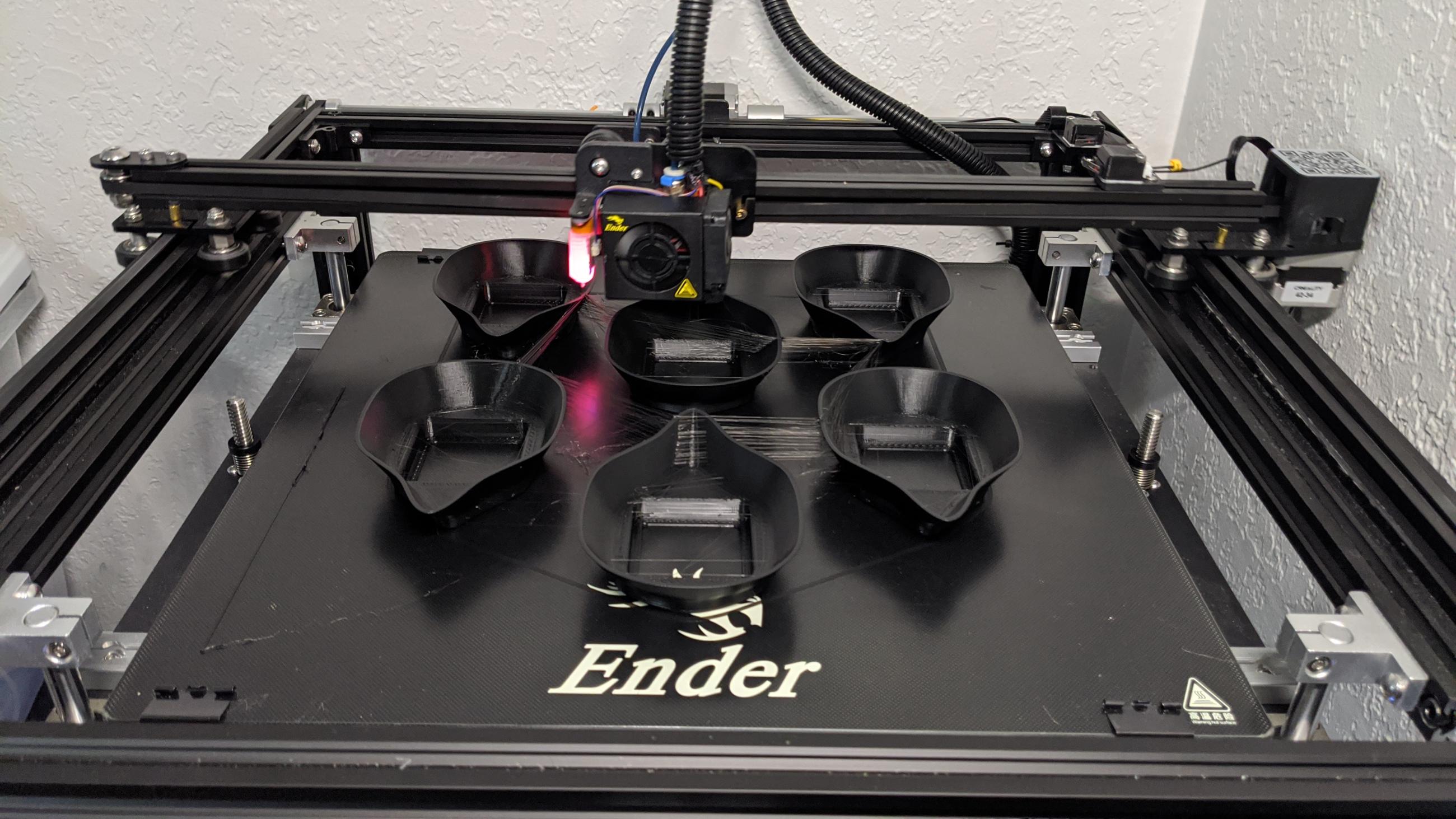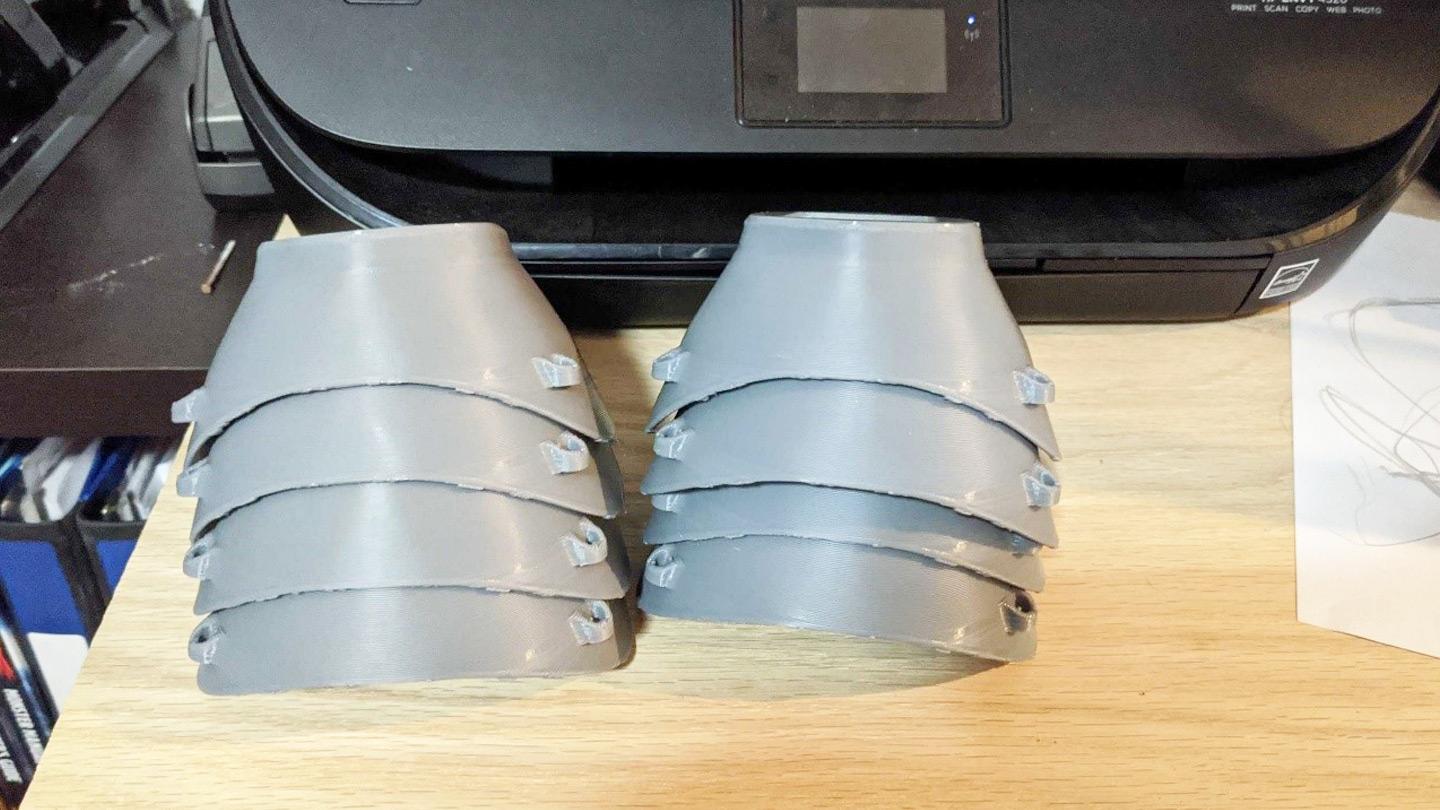KBR personnel print 3-D masks to battle COVID-19, donating own time and resources
When health care workers and emergency responders started running out of masks to prevent catching or spreading COVID-19, KBR engineers sprang into action.
Engineers who work at KBR’s Oklahoma City facility regularly address shortages of parts, find new suppliers, replace obsolete parts with newer and better commercial analogs, or make new parts themselves.
When COVID-19 hit, those engineers knew how to help. They made new masks on their own equipment, in their off-time, with their own resources, and gave them away to emergency responders who were running out of masks to protect themselves and those they help.
Heather Kuklinski, a physician’s assistant at Norman Regional Health System’s orthopedic center, said the masks are crucial to their operations and was grateful for the efforts of the volunteers from KBR.
Kuklinski said the virus rapidly exploded through community spread, to the point that staff was overwhelmed and their mask supply had been depleted. Thankfully, volunteers, including those at KBR, responded to the crisis in time. She said the new masks helped them stop the disease from spreading in their facility.
“We protected ourselves and protected other patients,” she said. “The ability for local folks to make this happen so fast—that’s impressive.”
To date, about 160 3-D printed masks and more than 300 fabric masks have been delivered from KBR’s volunteers.
Engineer Calahan Kirkner said when fellow engineer Philip Resnick contacted him about making masks, he was ready. Kirkner is not only an engineer at KBR in Oklahoma City; in his spare time he also regularly uses his own 3-D printer to make costumes for science fiction and fantasy conventions. Those costumes include masks.
Resnick sent Kirkner a 3-D model file for a 3-D-printed mask. Kirkner and his wife, Ellie, a gaming and animation instructor at Oklahoma Christian University, started making them. “During the first week, I revised the design to print easier,” Kirkner said. “In fact, we revised the design five or six times before we started mass producing them six at a time.”
Fellow engineer Emily Hendrickson pitched in. Hendrickson’s previous experience in graduate school before coming to KBR involved the design and evaluation of medical devices; this is important as the materials to be used for the masks have to fit important safety parameters.
“My contribution is looking at the bio-med part of this process,” Hendrickson said.
A pure HEPA filter does a great job at filtering out potential pathogens, but what might work for a machine-driven air system might not work so well for a mask for a person.
“A lot of materials aren’t meant to be close to your face,” she said.
Hendrickson and her husband, Glen Stevens, also an engineer at KBR, improved the seal around the edge of the mask. As printed, the original design was uncomfortable and didn’t make a clean seal. They improved on the design by lining the edge with soft tubing that allows the mask to seal comfortably.
“The seal around the face is important. If you have leaks around your nose and chin, the filter does nothing,” she said. They also packaged them for distribution.
Other KBR engineers pitched in by making masks on their home 3-D printers, making straps, and purchasing raw plastic material for the printers.
Employees delivered the masks to Oklahoma City area emergency responders in need located at Norman Regional Health System, Saint Anthony’s Hospital – Shawnee, the Oklahoma City Police Department, as well as several individual nurses and doctors across the area. Additionally, they’ve distributed their updated mask design to doctors, nurses and emergency responders across the nation so others can produce them.
Kuklinski said the masks are really making a difference. Whole sections of the hospital in Norman are reopening because personnel and patients can now be better protected.
“It speaks to our community spirit. It’s hard to quantify the lives saved, but I certainly believe it has made a difference,” she said.






